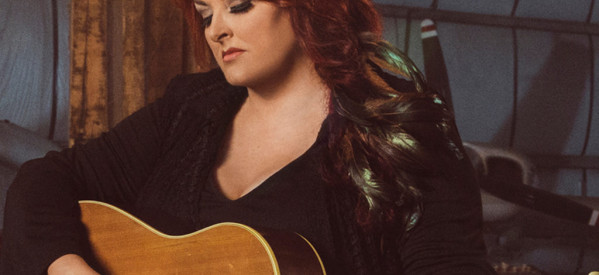A Joyful Sound

Arizona Musicfest season stages four months of performances for a good cause.
By Kenneth LaFave
It was once known as “the little festival that could.” Now it’s the cultural flashpoint of the North Valley.
What else would you call a performance series that has gone from 7,000 attendees in 2013 to more than 21,000 last year? Or one that grew from a few winter performances into a fall-to-spring season of more than two dozen concerts?
The name of the series: Arizona Musicfest.
“We are now a performance series with a full season, but we keep the name as part of our brand,” says Allan E. Naplan, the organization’s executive and producing director.
The air of “festival” — the feeling of a special event — still surrounds Arizona Musicfest, more than 25 years after it began as a handful of chamber-music concerts by local musicians. But today, the special-event feeling covers a unique concert series that includes classical, pop, Broadway and hard-to-pigeonhole among its representative genres.
A registered 501(c)(3) nonprofit organization, Arizona Musicfest has also grown in its ability to fulfill its community mission to support youth musicians through performance opportunities, scholarships and competitions. Since 2011, the scholarship program has granted more than $70,000 to Arizona students pursuing college degrees in music. Arizona Musicfest’s educational programs provide free instruction to more than 6,000 children every year.
Musicfest’s spectacular growth has taken place entirely within Naplan’s tenure as its producing director, which began in 2013. Naplan combines a double background of artist and administrator. He began his career as an opera singer, transitioning to arts management in 1999. Administrative positions with the opera companies of Houston, Pittsburgh, Madison (Wisconsin) and Minnesota preceded his move to Phoenix and Musicfest in 2013.
Upon arrival, Naplan began to continue what he saw as the “evolving footprint” of the festival. Quality was high, but “marketing needed to be increased and the patron experience needed improvement.”
“Upping the game meant reaching more people. Musicfest was a wonderful, hidden secret, and I felt strongly that it should be known by everyone,” he says.
Without diminishing the number of classical events in the season, Naplan added popular artists from Michael Feinstein to Pink Martini and Rosanne Cash. It worked to bring more attention to the festival, as well as generate more income.
“As soon as you put a symphony orchestra of 70 people on a stage, it’s a money loser,” Naplan points out. But moneymaking popular attractions can help offset that loss. So today, while the classical attractions have actually increased, they are “surrounded by much more.”
The 2018-2019 Musicfest season opens Nov. 2 with a tribute concert to classic rock’s piano men, Billy Joel and Elton John. Wynonna Judd drops by Nov. 17. Jan. 28 brings Herb Alpert, founder of the legendary Tijuana Brass, joined by Lani Hall, former lead singer of Latin pop group Brasil ‘66, while star of the Broadway stage Brian Stokes Mitchell pays a call Feb. 7, followed by the legendary Neil Sedaka Feb. 15. Feb. 17-24 is Festival Orchestra Week, seven days of classical performances featuring musicians of the New York Philharmonic, the Chicago Symphony Orchestra and other major national orchestras, led by music director Robert Moody.
A major classical draw this season is something called “Violins of Hope.” Superstar violin virtuoso Gil Shaham is the featured guest artist, but the name comes from the origin of the violins Shaham will share with his audiences.
“The ‘Violins of Hope’ are Holocaust survivors,” Naplan explains. “They are violins found in the death camps, covered with black soot, or found buried under the homes of Jews as they ran from the Gestapo. The founder of the project, Israeli luthier Amnon Weinstein, has recovered and restored over 60 such violins.”
Some 20 of the instruments will be on display during Shaham’s Musicfest concerts on Feb. 2 and 24. Shaham will perform Brahms’ Violin Concerto and John Williams’ theme for Schindler’s List.
A third work in the “Violins of Hope” concerts reveals yet another aspect of Naplan’s talents. “I enjoy a side career as a composer, mostly of choral works,” he explains. “In 1994, I was commissioned to compose a choral piece for Yom Ha Shoah (Day of Remembrance of the Holocaust) for Ithaca College Women’s Chorale.”
For the Feb. 23 and 24 concerts, Naplan has recomposed the piece to include an interlude for the Violins of Hope.
Musicfest audiences hail mostly from the populations of north Scottsdale, Cave Creek and Carefree, but when major artists appear, “we draw from all over the Valley,” Naplan points out.
As dramatic as Musicfest’s growth has been over the last five years, the potential for future growth is even greater, as those Valleywide audiences increase along with the population and its demand for quality musical performances.
“We’ve opened doors to new people with the popular concerts. It creates a relationship with the patrons,” Naplan says. “They come for one show. Then they come back for six or ten.”
Arizona Musicfest takes places at various venues throughout the Valley from Nov. 2018 through March 2019. For a full festival schedule and to purchase tickets, visit azmusicfest.org.
Related posts
Leave a Comment
You must be logged in to post a comment.






